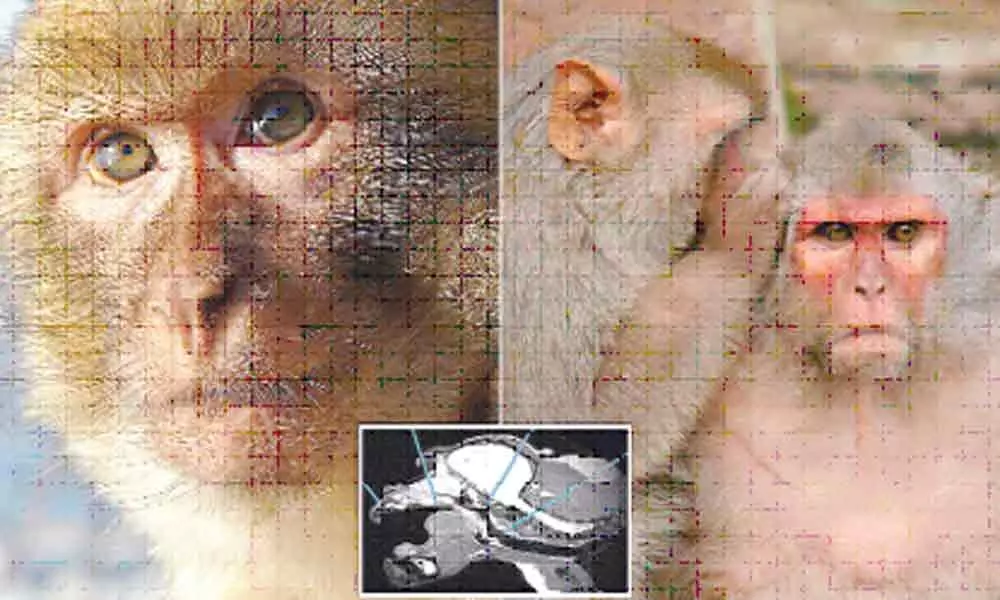Brain circuit generating conscious awareness unravelled in monkeys

Researchers have demonstrated that a small jab of electricity delivered to a particular point in the brain can snap a monkey even out of deep unconsciousness, an advance that may lead to the discovery of nerve circuits key to conscious awareness, and potential treatments for brain disorders.
Washington: Researchers have demonstrated that a small jab of electricity delivered to a particular point in the brain can snap a monkey even out of deep unconsciousness, an advance that may lead to the discovery of nerve circuits key to conscious awareness, and potential treatments for brain disorders.
According to the study, published in the journal Neuron, macaques made unconscious with anesthetic drugs can be revived and alert within two or three seconds of applying low current on a spot deep in the core of the brain called the central lateral thalamus.
"For as long as you're stimulating their brain, their behaviour -- full eye opening, reaching for objects in their vicinity, vital sign changes, bodily movements and facial movements -- and their brain activity is that of a waking state," said study co-author Yuri Saalmann from the University of Wisconsin (UW)-Madison in the US. "Then, within a few seconds of switching off the stimulation, their eyes closed again.
The animal is right back into an unconscious state," Saalmann said. According to the researchers, the results revealed a particular loop of nerve activity in the brain's central lateral thalamus in which lesions have been linked in earlier studies to severe consciousness disruption like coma. However, the scientists said this location alone is not enough to manipulate consciousness.
They tried to match the frequency of nerve activity in the central lateral thalamus during wakefulness. Stimulating multiple sites simultaneously as little as 200 millionths of a metre apart, and applying bursts of electricity 50 times per second (Hertz) may work like a switch to bring the brain in and out of anesthesia, the study noted.
"A millimeter out of position, and you dramatically reduce the effect," said study co-author Michelle Redinbaugh from UW-Madison. "And if you're in that ideal location, but stimulating at two Hertz instead of 50? Nothing happens. This is very location- and frequency-specific," Redinbaugh said. The researchers added that the outer folds of the brain, called the cortex, are also involved in generating consciousness.
Watching the signalling using brain scans as the monkeys moved from unconscious to conscious states, the scientists reported observing the central lateral thalamus stimulating parts of the cortex. They said the cortex in turn, influenced the central lateral thalamus to keep it active. "So, you have this loop between the deeper layers of the cortex and the central lateral thalamus, which in a sense acts like an engine," said Saalmann.
"We can now point to crucial parts of the brain that keep this engine running and drive changes in the cerebral cortex that affect your awareness, the richness of your conscious experience," he added. The scientists hope that their approach may one day help patients dealing with many types of abnormal brain activity.




















